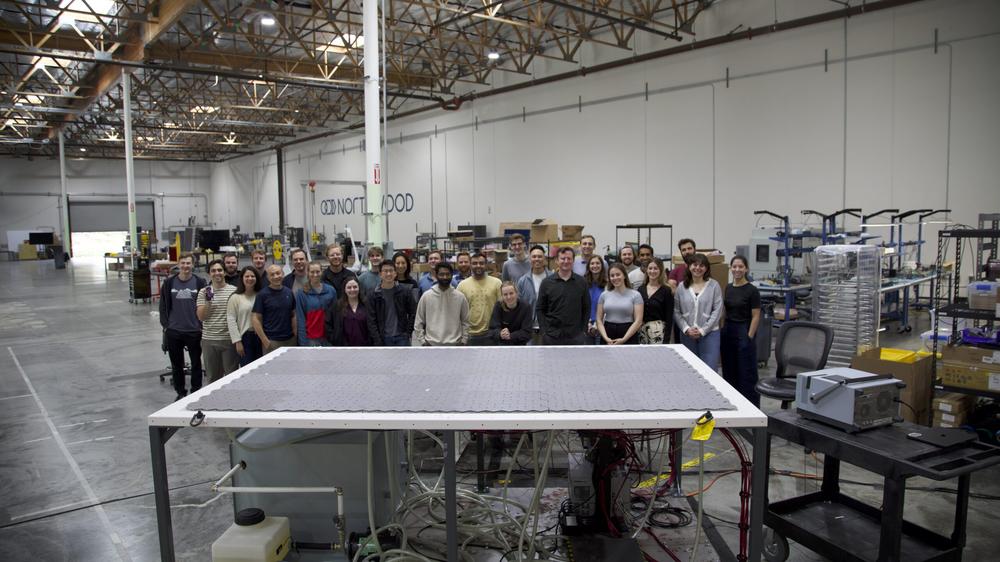Northwood Space has completed initial testing of the second generation of its phased array antenna technology, which can simultaneously communicate with spacecraft across a range of orbits, from near Earth all the way out to geostationary space.
The prototype gateway was able to connect with several satellites in space during recent testing, said Bridgit Mendler, co-founder and chief executive of Northwood Space. This successful demonstration has given Northwood confidence to move into commercial deployment of the company's antennas within the coming months.
"This system, with planned multinational deployment this year, will be the first building block in our network that over the next three years aims to support 500 simultaneous spacecraft across multiple frequencies, data rates, and orbits," she said.
The production-ready antenna system, which will be formally named Portal, is designed to connect with satellites in low-Earth, medium-Earth, and geostationary orbit. Mendler said it has demonstrated the ability to deliver 1 kW of transmit power and receive sub-picowatt signals.
More powerful and durable
The company was founded on the premise that there is presently a bottleneck in the capability of commercial ground stations to download increasing amounts of data gathered by satellites in orbit. Northwood and its investors are betting that these commercially available ground stations, many of which were deployed a decade or longer ago, cannot keep up with the pace of new satellites arriving in orbit.
As Ars reported recently in a feature article on the company, Northwood conducted a field test of its first prototype phased array antenna last October in North Dakota. There were a few struggles in making the first connections with the technology, but the company got everything working after a couple of days.
Since then, Northwood's small team of engineers has been working on the design of a more capable second-generation antenna, which is more rugged and transportable and more easily produced for commercial deployment. For example, with a liquid cooling system, the Portal antenna can withstand temperatures of up to 50° Celsius (122° F).
The prototype tested last month is the result of this design work. It has 20 times the power (defined as Effective Isotropic Radiated Power) of the first antenna, Mendler said. It is the most powerful commercial communications phased array ever built, according to Northwood. As a result, it can support three times the number of beams.
The parts for the antenna arrived less than two weeks before testing began, on the night of June 5. Deployment took about 10 minutes, essentially moving the antenna by forklift outside from Northwood's warehouse in Torrance, California, and turning it on. They then began to wait for their first pass at 2 am.
Making a connection
"The difficulty of testing satellite ground systems is the lag time between satellite passes as you wait for them to reach the right point in their orbit to pass overhead," Mendler said. "We spent a few hours in the parking lot waiting for a pass to test with. Some team members brought out cots to rest on; others took naps in their cars. I ordered Taco Bell, and one of the engineers' girlfriends brought homemade cookies."
During the first couple of passes, the prototype had some difficulty acquiring a signal from a handful of passing satellites. There were some technical issues. After a couple more misfires, the prototype connected with a passing satellite, Mendler said. For Northwood, this was an important proof of the new technology.
The company's 35,000-sq.-foot factory is designed to build 16 Portal arrays a month. As Northwood engineers continue to test the Portal hardware and software and prepare to move into production of the antennas, Mendler is focusing on identifying locations around the world to deploy the technology and begin serving commercial customers.
With luck, some of their data could start beaming down before the end of the year.

 Mosca, affissi i primi cartelli: “Attenzione, caduta dirigenti”
Mosca, affissi i primi cartelli: “Attenzione, caduta dirigenti”